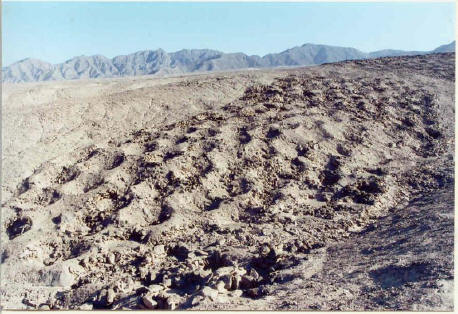
In the Pisco Valley on Peru’s Nazca Plateau is a band of 5,000 to 6,000 holes, each about 1 meter in diameter and 100 centimeters deep. The band, which averages about 20 meters in width, starts at the edge of a valley and extends about 1.5 kilometers up a hill understandably known as Cerro Viruela, or Smallpox Hill. (You can see its extent in Google Earth.)
No one knows who dug the holes or why. They’re circular and lined with stone, resembling pits found elsewhere that serve as resting places for mummies. But these are empty. Possibly they were designed for storage by users of the Inca road system, or possibly they were used to measure quantities of produce owed as tribute to the Inca state. Archaeologists are still investigating.
